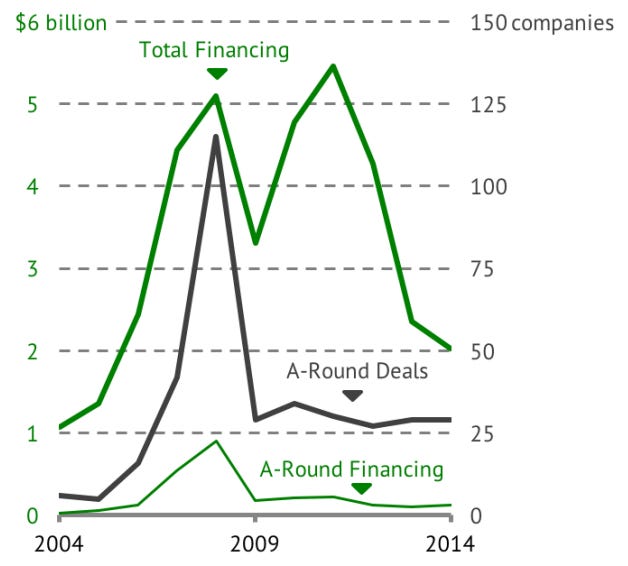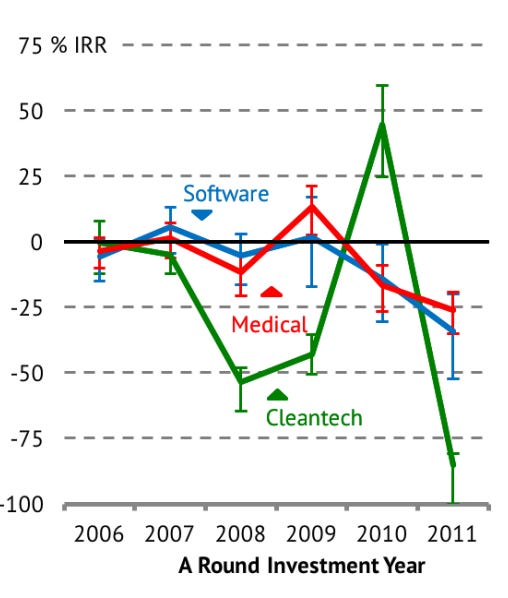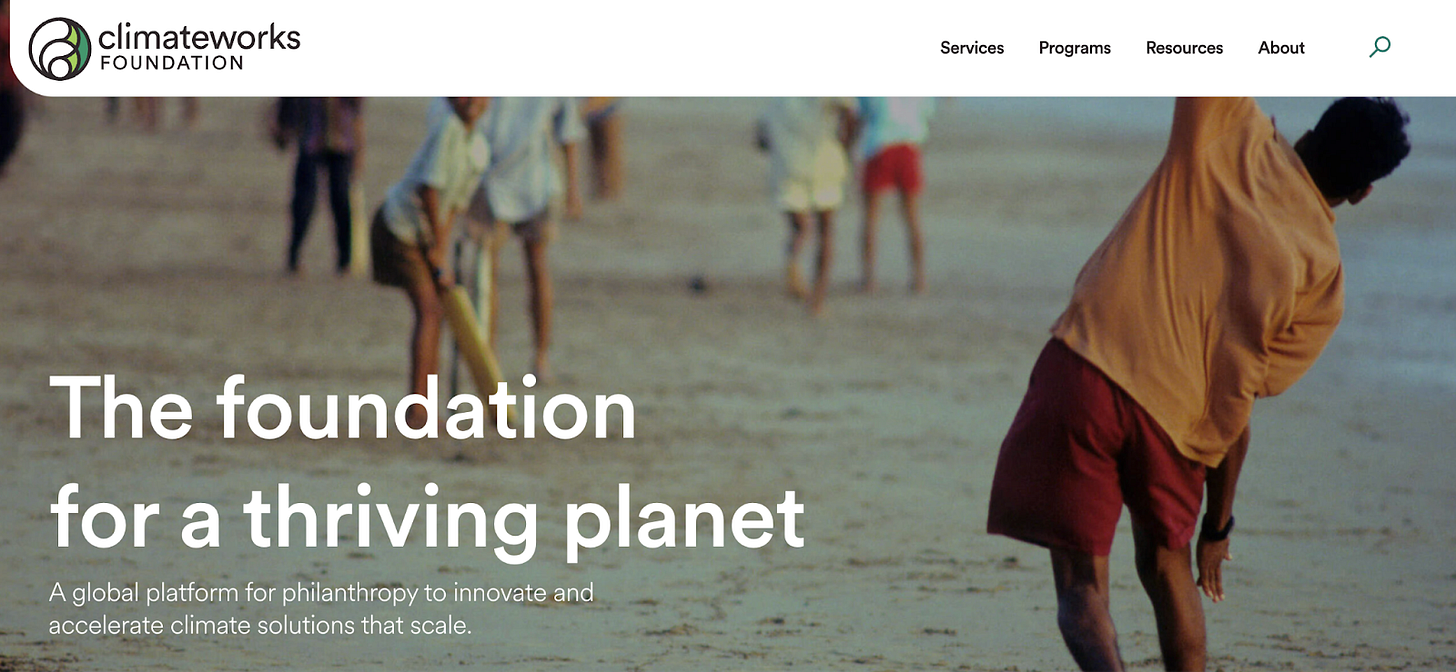Climate Tech Grants Guide for Startups and Investors
Learn about how climate tech startups attract grant funding and the importance of grant funding to de-risk climate tech ventures for VCs and angel investors.
Grants are a critical form of funding for innovation, enabling new initiatives and technologies to be developed. This guide will walk you through why grants attract startups and investors, how the current grant space is now compared to the past, and the best places to find grants.
Grants and Other Equity-Free Incentives Attract Climate Tech Startups and VCs
Reason 1. Lower Financial Risk for Founders
Launching a climate tech startup is expensive as you need funds for research, development, patents, prototyping, and other aspects, which can be far more expensive than a SaaS startup. Grants and equity-free incentives help offset these higher upfront costs, allowing founders to focus on developing their technologies without the burden of further dilution of ownership or personally guaranteed debt. This reduces the financial risk associated with launching a climate tech startup, making it more attractive for entrepreneurs to enter the field and VCs to invest in it.
Reason 2. Accelerated Innovation
Grants and other equity-free incentives act as catalysts for innovation, providing much-needed financial support to startups that are working on breakthrough technologies. These incentives in climate tech enable startups to expedite their development cycles and bring their tech to market faster, increasing the overall pace of innovation within the climate tech ecosystem.
Reason 3. Recruiting Top Talent
With equity-free incentives, startups can dedicate more resources to hiring top talent, building strong teams, and fostering a culture of innovation. This contributes to the success of individual startups and strengthens the entire climate tech ecosystem, as these talented individuals drive the development of cutting-edge solutions to address climate change.
Reasons 4. Encouraging Investors
VCs are attracted to investing in climate tech startups that have acquired grants or other equity-free incentives. That’s because grants and equity-free incentives signal that a startup has undergone a rigorous selection procedure and has financial support from other sources. This validation and resource allocation can attract additional investment, as it reduces the risk associated with backing early-stage climate tech ventures.
How Does the Current Grant Space Compare to the 2006-2011 Cleantech Boom and Bust
The climate tech space has evolved significantly since the 2006-2011 cleantech boom and bust. It’s important to see how the market has changed to make sure that the same bust does not happen this time around.
1. Market Readiness and Maturity
During the 2006-2011 cleantech boom, many climate tech companies struggled to achieve commercial viability. The reason being, after 2008’s peak investment, VC investment in climate tech shifted towards late-stage rounds, making it challenging for early-stage startups to get their product to market.
In contrast, the current climate tech boom is characterized by more mature technologies, which are better positioned to deliver on their promises, and VCs have readily invested in them. The US government has also created many grants and equity-free incentives to help climate tech startups reverse climate change.
Now, climate tech startups have both more mature technologies to bring to market and more development funding available to ensure companies have enough resources to develop and scale without going bankrupt.
2. Policy Support and Government Commitment
The 2008 cleantech boom witnessed inconsistent policy support, with governments often wavering in their commitment to clean energy. Today, there is a global consensus on the urgency of addressing climate change. This has led to more robust policy measures, international climate agreements, and more consistent government support for climate tech initiatives.
The Inflation Reduction Act is the first large chunk of monetary support for climate-friendly manufacturing and purchasing in the US, but many smaller bills and policy changes add up to make a big difference as well. As I’m writing this, the EPA is planning to implement strict auto pollution limits, which will help us transition to electric vehicles. This kind of policy creates more involuntary market movements toward EVs, which benefits both large and small players in the electric vehicle market.
3. Public Awareness and Engagement
From 2006 to 2011, climate tech companies found it a challenge to spread public awareness about the environmental crisis or grow startups. The Venture capital (VC) firms spent over $25 billion funding clean energy technology (cleantech) startups from 2006 to 2011 and lost over half their money; as a result, funding has dried up in the cleantech sector. This led to underperforming investments, with the exception of 2010. In 2010, cleantech companies delivered handsome returns - an internal rate of return (IRR) of 45% - because of Nest's sale to Google.
4. Financial Landscape
During the 2006-2011 cleantech boom, there was a rush of investment without proper due diligence, resulting in overvaluation and eventual collapse of many companies. In the current climate tech boom, investors have learned from past mistakes and are more cautious and strategic in their approach.
5. Collaboration and Partnerships
The current climate tech boom is characterized by increased collaboration between public and private sectors, as well as between for-profit companies and research institutions. These partnerships have fostered the exchange of knowledge and resources, accelerating the development and deployment of climate tech solutions.
Best Sources for Finding Grants
1. OpenGrants - A Grant Search Engine
OpenGrants helps grant seekers search and apply for climate tech grants announced by the government. They have a 3-step process to apply for a grant:
Step 1: Sign up to OpenGrants for free.
Step 2: Add your organization details that OpenGrants can then match with funding opportunities.
Step 3: The company suggests grants that suit your organization. You can also search, save, and apply for grants on their search engine.
OpenGrants has over 5,500 grants to search from that are worth ~$750 billion. The platform has two plans to choose from: a free version that gives you access to basic features and a Pro plan to use Power Search and enhance your grant search for $29/month.
2. Climateworks Foundation
From local efforts to international strategies, the Climateworks Foundation supports groups and projects aiming to combat the climate crisis. Their grant distribution system allows them to effectively contribute to a wide array of worldwide philanthropic endeavors. Since 2008, the company has allocated more than $1.3 billion in grants to over 750 companies across 50 countries. Like OpenGrants, Climateworks also has a search engine to search for grants, but you don’t have to sign up for their platform to do so. You can just head over to their grant database page and get started with the search.
3. UNICEF Venture Fund
The UNICEF Venture Fund is offering equity-free investments of up to $100,000 for early-stage tech startups working on solutions to combat climate change. The fund is particularly interested in companies utilizing frontier technologies such as drones, blockchain, extended reality, artificial intelligence, machine learning, and data science. Eligible startups should have a working prototype and demonstrated results and be registered in one of UNICEF's program countries.
The fund aims to support innovative solutions across various areas, including climate analytics, disaster risk mitigation, greener economies, and carbon emission tracking. With a focus on benefiting children and young people, the Venture Fund encourages female-founded startups to apply and seeks solutions that address challenges, optimize for low-resource environments, reduce inequalities, and cater to multiple languages.
How to Win a Grant
Winning a grant is a competitive process, but you can significantly increase your chances of success with the right strategy, preparation, and approach. Here's a quick guide on how to win a grant:
Research and identify the right grant opportunities: Thoroughly research available grants in your sector using sites like OpenGrants and ClimateWorks. Focus on grants that align with your idea, mission, and goals. This will increase the likelihood of being considered for funding.
Understand the grant requirements and eligibility criteria: Carefully review the grant guidelines, including eligibility criteria, objectives, and reporting requirements. Ensure that your company meets these criteria before investing time in the application process.
Develop a strong project proposal: A well-crafted proposal is essential for winning a grant. Your proposal should clearly outline the problems you’re addressing, the objectives of the project, the target audience, and the impact you expect to achieve. Be specific about how the funding will be utilized and provide a detailed budget.
Emphasize credibility and track record: Grant providers want to invest in organizations that demonstrate the ability to execute their projects successfully. Highlight your organization's experience, expertise, previous successes, and any partnerships or collaborations that can support the project.
Tailor your application to the grant provider: Customize your proposal to address the grant provider's specific goals, values, and priorities. This will demonstrate that you have taken the time to understand their mission and show how your project aligns with their objectives.
Outline project timeline and milestones: Provide a detailed timeline for the project, including key milestones and expected outcomes. This will help the grant provider understand the project's scope and ensure that you have a well-thought-out plan for execution.
Submit a well-written, error-free application: Take the time to proofread your application, ensuring that it’s well-written, concise, and free of grammatical errors. A polished application reflects professionalism and attention to detail.
Seek feedback and learn from unsuccessful applications: Talk with professors, mentors, and trusted advisers in your field to learn more about what successful grant proposals look like in your situation and get feedback on your plan and your drafting process.
Develop relationships with grant providers: Cultivating relationships with grant providers allows you to better understand their priorities and objectives and may increase your chances of being considered for future funding opportunities.
Start early and be persistent: Grant applications can be time-consuming and often require multiple iterations. Begin the process early to ensure you have enough time to develop a strong proposal, gather the required documentation, and submit your application before the deadline. Persistence is key – if you are unsuccessful the first time, keep applying and refining your approach.
Where to Learn More About Climate Tech Grants
Websites, Databases, and Directories
Some of the best sources to learn more about climate tech grants are on the websites of grant providers such as:
These websites often provide detailed information on grant programs, eligibility criteria, and application processes. Apart from learning about new grants, you must know how to write a grant application that helps you seek it. You can enroll in courses from platforms like Udemy and Coursera to learn more about how to write grants the right way.
If you enjoyed this article, share it with your network and subscribe to Warming Up to Climate Tech. This publication is brought to you by Inbound Growth Co - content for climate-focused brands.









